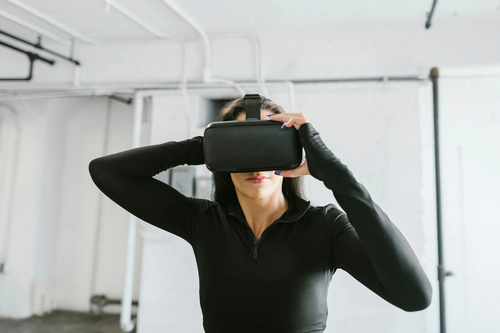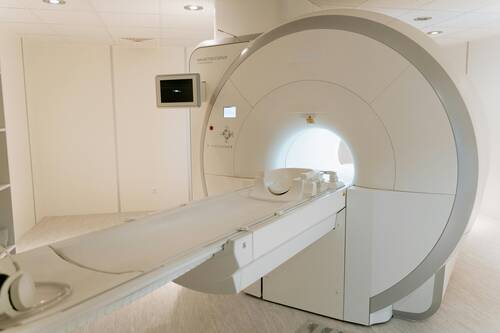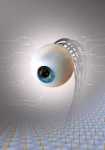In embracing technology, research facilities position themselves at the forefront of scientific progress. These innovations empower researchers to push beyond...
Radiology, Technology / 06.11.2024
Essential MRI Parts That Need Regular Replacement and Tips for Finding MRI Spare Parts
MRI (Magnetic Resonance Imaging) machines are complex and rely on a range of parts working together to deliver clear imaging. Due to their heavy daily use in hospitals and clinics, some parts undergo more wear and tear than others. Replacing these components on time is crucial for ensuring accurate diagnostics and patient safety. Below, we’ll explore the MRI parts that most often require replacement and offer tips on how to find quality MRI spare parts.
Coils
What Are Coils? MRI coils are essential in detecting the magnetic resonance signals generated from within the patient’s body. They act as both the transmitter and receiver of radiofrequency (RF) signals, crucial for image quality. Why Are They Prone to Wear? Given their role in image acquisition, coils are highly susceptible to wear and tear. Issues often arise from physical damage (accidental drops or impacts) and electronic faults, as these coils are delicate. Common coil issues include signal loss and calibration problems. Replacement Tips Regular testing and calibration help extend the life of coils, but when they need replacing, opt for Original Equipment Manufacturer (OEM) coils to maintain image quality and compatibility with your MRI system. (more…)
Health Care Systems / 24.08.2024
The Broad Scope of GxP Compliance: Beyond Healthcare to Life Sciences, Food, and Pharmaceuticals
In businesses that work under regulations, GxP compliance is a critical aspect. It provides the framework for following top standards...
Author Interviews, Ophthalmology, Technology / 18.06.2020
Sci-Fi Bionic Eye Gets Closer to Reality with Curved Retina Coated with Nanowires
MedicalResearch.com Interview with:
 Prof. FAN Zhiyong PhD
University of California, Irvine
HKUST School of Engineering
MedicalResearch.com: What is the background for this study? What are the main findings?
Response: According to the report of The World Health Organization, there are over 252 million people suffering from visual impairment globally and 15 million of them are difficult to cure by conventional medical methods. However, today, even the best bionic eyes have only 200 clinical trials, less than 1 ppm of all the patients, mainly due to their poor performance and high cost. The huge gap in supply and demand triggers the study of bionic eyes with performance comparable to human eyes. One important reason for their poor performance is the mismatch in shape between the flat bionic eyes and concave sclera. To protect the soft tissue in eyes from being damaged by the bionic surface, the implanted bionic eyes have to be small. This has limited the sensing area and further the electrodes number, and finally yielded poor image sensing characters with low resolution and narrow field-of-view.
In this work, we are trying to achieve high performance image sensing by biomimeticing human eyes. The high-density NWs are well aligned and embedded in a hemispherical template to serve as retina. The conformal attachment of bionic eyes with sclera enables the large sensing area and wide visual angle. In addition, each individual high-density nanowires can potentially work as an individual pixel. By addressing these challenges, our device design has huge potential to improve the image sensing performance of bionic eyes.
(more…)
Prof. FAN Zhiyong PhD
University of California, Irvine
HKUST School of Engineering
MedicalResearch.com: What is the background for this study? What are the main findings?
Response: According to the report of The World Health Organization, there are over 252 million people suffering from visual impairment globally and 15 million of them are difficult to cure by conventional medical methods. However, today, even the best bionic eyes have only 200 clinical trials, less than 1 ppm of all the patients, mainly due to their poor performance and high cost. The huge gap in supply and demand triggers the study of bionic eyes with performance comparable to human eyes. One important reason for their poor performance is the mismatch in shape between the flat bionic eyes and concave sclera. To protect the soft tissue in eyes from being damaged by the bionic surface, the implanted bionic eyes have to be small. This has limited the sensing area and further the electrodes number, and finally yielded poor image sensing characters with low resolution and narrow field-of-view.
In this work, we are trying to achieve high performance image sensing by biomimeticing human eyes. The high-density NWs are well aligned and embedded in a hemispherical template to serve as retina. The conformal attachment of bionic eyes with sclera enables the large sensing area and wide visual angle. In addition, each individual high-density nanowires can potentially work as an individual pixel. By addressing these challenges, our device design has huge potential to improve the image sensing performance of bionic eyes.
(more…)
 Prof. FAN Zhiyong PhD
University of California, Irvine
HKUST School of Engineering
MedicalResearch.com: What is the background for this study? What are the main findings?
Response: According to the report of The World Health Organization, there are over 252 million people suffering from visual impairment globally and 15 million of them are difficult to cure by conventional medical methods. However, today, even the best bionic eyes have only 200 clinical trials, less than 1 ppm of all the patients, mainly due to their poor performance and high cost. The huge gap in supply and demand triggers the study of bionic eyes with performance comparable to human eyes. One important reason for their poor performance is the mismatch in shape between the flat bionic eyes and concave sclera. To protect the soft tissue in eyes from being damaged by the bionic surface, the implanted bionic eyes have to be small. This has limited the sensing area and further the electrodes number, and finally yielded poor image sensing characters with low resolution and narrow field-of-view.
In this work, we are trying to achieve high performance image sensing by biomimeticing human eyes. The high-density NWs are well aligned and embedded in a hemispherical template to serve as retina. The conformal attachment of bionic eyes with sclera enables the large sensing area and wide visual angle. In addition, each individual high-density nanowires can potentially work as an individual pixel. By addressing these challenges, our device design has huge potential to improve the image sensing performance of bionic eyes.
(more…)
Prof. FAN Zhiyong PhD
University of California, Irvine
HKUST School of Engineering
MedicalResearch.com: What is the background for this study? What are the main findings?
Response: According to the report of The World Health Organization, there are over 252 million people suffering from visual impairment globally and 15 million of them are difficult to cure by conventional medical methods. However, today, even the best bionic eyes have only 200 clinical trials, less than 1 ppm of all the patients, mainly due to their poor performance and high cost. The huge gap in supply and demand triggers the study of bionic eyes with performance comparable to human eyes. One important reason for their poor performance is the mismatch in shape between the flat bionic eyes and concave sclera. To protect the soft tissue in eyes from being damaged by the bionic surface, the implanted bionic eyes have to be small. This has limited the sensing area and further the electrodes number, and finally yielded poor image sensing characters with low resolution and narrow field-of-view.
In this work, we are trying to achieve high performance image sensing by biomimeticing human eyes. The high-density NWs are well aligned and embedded in a hemispherical template to serve as retina. The conformal attachment of bionic eyes with sclera enables the large sensing area and wide visual angle. In addition, each individual high-density nanowires can potentially work as an individual pixel. By addressing these challenges, our device design has huge potential to improve the image sensing performance of bionic eyes.
(more…)
Author Interviews, Psychological Science, Technology / 12.06.2019
Are Younger People Really Addicted to Their Smartphones?
MedicalResearch.com Interview with:
Brittany I. Davidson MA
Doctoral Researcher in Information Systems
University of Bath
MedicalResearch.com: What is the background for this study? What are the main findings?
Response: Typically, research interested in the impact of technology, or more specifically, smartphones on people and society, use surveys to measure people’s usage. Almost always, these studies claim potential harms from using smartphones, like depression, anxiety, or poorer sleep. However, these studies simply ask people about their behaviour rather than actually measuring it.
In our study, we took 10 widely used surveys to measure screen time, which typically asks how often people use their smartphone or how problematic their usage is. We compared this to people’s objective smartphone usage from Apple Screen time (e.g., minutes spend on iPhone, number of times they picked up their phone, and the number of notifications received).
We found that there is a large discrepancy between what people self-report and what they actually do with their iPhone. This is highly problematic as the sweeping statements that claim smartphones (or technology more generally) have a negative impact on mental health are not based on solid and robust evidence at this time, which leaves much to be desired in terms of what we really know about the impacts of technology use on people.
(more…)
Author Interviews, Diabetes, JAMA, Technology / 18.04.2019
Most Diabetes Apps Do Not Provide Real Time Decision Support (yet)
MedicalResearch.com Interview with:
Associate Professor Josip Car
MD, PhD, DIC, MSc, FFPH, FRCP (Edin)
Associate Professor of Health Services Outcomes Research,
Director, Health Services Outcomes Research Programme and Director
Centre for Population Health Sciences
Principal Investigator, Population Health & Living Laboratory
MedicalResearch.com: What is the background for this study?
Response: In 2018, almost 8% of people with diabetes who owned a smartphone used a diabetes app to support self-management. Currently, most apps are not regulated by the US Food and Drug Administration (FDA). We downloaded and assessed 371 diabetes self-management apps, to see if they provided evidence-based decision support and patient education. (more…)
Author Interviews, Diabetes, Pediatrics / 23.08.2018
Subcutaneous Injection of Islet Cells May One Day Control Type I Diabetes
MedicalResearch.com Interview with
 Sherry L. Voytik-Harbin
Weldon School of Biomedical Engineering
Purdue University
MedicalResearch.com: What is the background for this study? What are the main findings?
Response: Type 1 diabetes (T1D) is a major health problem affecting over 1.25 children and adults in the United States alone. It also affects our beloved companion animals, with 1 out of every 100 dogs and cats having this condition.
T1D results from an autoimmune condition, where the patient’s body, by mistake, attacks and destroys cells in the pancreas (β cells) that are responsible for regulating blood glucose levels by producing insulin. While injectable insulin represents the standard of care for these patients, it provides an inferior control system relative to functional β cells, leaving the majority of patients at risk for life-threatening complications. Although transplantation of pancreatic islets, which contain replacement β cells, via portal vein injection into the liver, is an attractive therapeutic alternative for these patients, persistent risks and challenges preclude its more widespread clinical adoption. These include rapid destruction and loss of function of the majority of donor cells upon transplantation and the need for life-long immunosuppression.
This study evaluated a novel packaging strategy for the delivery and maintenance of functional donor islets beneath the skin, resulting in rapid and extended reversal of T1D in diabetic mice.
(more…)
Sherry L. Voytik-Harbin
Weldon School of Biomedical Engineering
Purdue University
MedicalResearch.com: What is the background for this study? What are the main findings?
Response: Type 1 diabetes (T1D) is a major health problem affecting over 1.25 children and adults in the United States alone. It also affects our beloved companion animals, with 1 out of every 100 dogs and cats having this condition.
T1D results from an autoimmune condition, where the patient’s body, by mistake, attacks and destroys cells in the pancreas (β cells) that are responsible for regulating blood glucose levels by producing insulin. While injectable insulin represents the standard of care for these patients, it provides an inferior control system relative to functional β cells, leaving the majority of patients at risk for life-threatening complications. Although transplantation of pancreatic islets, which contain replacement β cells, via portal vein injection into the liver, is an attractive therapeutic alternative for these patients, persistent risks and challenges preclude its more widespread clinical adoption. These include rapid destruction and loss of function of the majority of donor cells upon transplantation and the need for life-long immunosuppression.
This study evaluated a novel packaging strategy for the delivery and maintenance of functional donor islets beneath the skin, resulting in rapid and extended reversal of T1D in diabetic mice.
(more…)
 Sherry L. Voytik-Harbin
Weldon School of Biomedical Engineering
Purdue University
MedicalResearch.com: What is the background for this study? What are the main findings?
Response: Type 1 diabetes (T1D) is a major health problem affecting over 1.25 children and adults in the United States alone. It also affects our beloved companion animals, with 1 out of every 100 dogs and cats having this condition.
T1D results from an autoimmune condition, where the patient’s body, by mistake, attacks and destroys cells in the pancreas (β cells) that are responsible for regulating blood glucose levels by producing insulin. While injectable insulin represents the standard of care for these patients, it provides an inferior control system relative to functional β cells, leaving the majority of patients at risk for life-threatening complications. Although transplantation of pancreatic islets, which contain replacement β cells, via portal vein injection into the liver, is an attractive therapeutic alternative for these patients, persistent risks and challenges preclude its more widespread clinical adoption. These include rapid destruction and loss of function of the majority of donor cells upon transplantation and the need for life-long immunosuppression.
This study evaluated a novel packaging strategy for the delivery and maintenance of functional donor islets beneath the skin, resulting in rapid and extended reversal of T1D in diabetic mice.
(more…)
Sherry L. Voytik-Harbin
Weldon School of Biomedical Engineering
Purdue University
MedicalResearch.com: What is the background for this study? What are the main findings?
Response: Type 1 diabetes (T1D) is a major health problem affecting over 1.25 children and adults in the United States alone. It also affects our beloved companion animals, with 1 out of every 100 dogs and cats having this condition.
T1D results from an autoimmune condition, where the patient’s body, by mistake, attacks and destroys cells in the pancreas (β cells) that are responsible for regulating blood glucose levels by producing insulin. While injectable insulin represents the standard of care for these patients, it provides an inferior control system relative to functional β cells, leaving the majority of patients at risk for life-threatening complications. Although transplantation of pancreatic islets, which contain replacement β cells, via portal vein injection into the liver, is an attractive therapeutic alternative for these patients, persistent risks and challenges preclude its more widespread clinical adoption. These include rapid destruction and loss of function of the majority of donor cells upon transplantation and the need for life-long immunosuppression.
This study evaluated a novel packaging strategy for the delivery and maintenance of functional donor islets beneath the skin, resulting in rapid and extended reversal of T1D in diabetic mice.
(more…)
Author Interviews, Technology / 21.08.2018
Digitization of Pathology Specimens Allows for Improved Workflow and Incorporation of Advanced Techniques
MedicalResearch.com Interview with:|
Dr. Wendy L. Frankel, MD. Kurtz Chair and Distinguished Professor and
Dr. Anil Parwani, MD, PhD, MBA, Associate Professor
Wexner Medical Center
The Ohio State University
MedicalResearch.com: What is the background for this work? How does digital pathology differ from traditional H/E specimens? Is there is different processing method? Difference in prep time or costs?
Response: Traditional pathology involves patient tissue coming to the lab and being processed. The end result is a glass slide with a stained tissue that pathologists use under a microscope. The process in digital pathology is the same, up until the point right after when the glass slide is made. In digital pathology, we put the glass slide under a scanner instead of under a microscope. The scanner creates a large file image that can be reviewed remotely by pathologists around the world.
The advantage of digital pathology, and the reason we are doing this at The Ohio State University Comprehensive Cancer Center – Arthur G. James Cancer Hospital and Richard J. Solove Research Institute (OSUCCC - James), is because when the slide is digitized, the image can be rapidly shared with an expert for review, or another institute that the patient may be going to. In addition, I can look at the image and ask the computer to quantitate different types of features that are present in the sample. While this has historically been done manually with a microscope, it’s been a more subjective process that is open to human error.
On top of that, we now have computer programs that allow us to ask very specific questions about the sample. For example, we can ask how many nuclei are in the field, how many of the nuclei show signs of cancer, and the size and color of the nucleus. These programs make the whole diagnostic process more objective and standardized. This is something we just can’t do by looking at a glass slide under a microscope.
Finally, you can also use these images for presentations at clinical conferences or for teaching residents, fellows or other pathologists. You now have the means to create an archive of patient slides and have it instantaneously available.
(more…)
Author Interviews, Dermatology, Technology / 13.06.2018
Blackcurrant Extract Developed As New Natural Hair Dye
MedicalResearch.com Interview with:
Dr. Richard S. Blackburn
BSc (Leeds), PhD (Leeds), CCol FSDC
Associate Professor in Coloration Technology
Head of Sustainable Materials Research Group
University of Leeds
MedicalResearch.com: What is the background for this study?
Response: I’ve been working with my colleague Professor Chris Rayner at The University of Leeds for over 10 years in the field of anthocyanins, which are pigments that provide colour to most berries, flowers, and many other fruits and vegetables. We have developed techniques to isolate these compounds from food waste, characterise the chemistry of the extracts, and use these natural pigments in various applications. In this work, anthocyanins extracted from blackcurrant waste created during the manufacture of blackcurrant cordial (Ribena) have for the first time been used in an effective new hair dyeing technology.
Why hair dyeing? The global hair coloration industry is worth more than $10 billion a year, with the number of people colouring their hair in professional salons and at home on the increase, but some of the ingredients found in commonly-used synthetic hair dyes, are known irritants and can trigger severe allergic reactions. There is also much debate about whether these ingredients also cause cancer. Dyes that some may consider ‘natural’ – such as those including henna – usually escape scrutiny when it comes to health concerns, but the main natural colorant in henna is lawsone, which the EU Scientific Committee on Consumer Safety states is toxic. What is more, it is thought up to 95% of all dyes end up washed down the drain; their effect on the environment is unknown.
Because of issues and concerns around conventional dyes, we wanted to develop sustainable, biodegradable alternatives using green chemistry processes that minimise potential risks to health and offer consumers a different option.
(more…)
Asthma, Author Interviews, Biomarkers / 12.06.2018
New Test Can Identify Asthma With Nasal Brush Biomarker
MedicalResearch.com Interview with:
Dr. Supinda Bunyavanich MD
Pediatric Allergy and Immunology
Physician and researcher at the Icahn School of Medicine.
MedicalResearch.com: What is the background for this study? What are the main findings?
Response: In this study, we report on an accurate asthma biomarker we have developed based on a simple nasal brush.
 Asthma is a chronic respiratory disease that affects 10% of children and adults in the U.S. Mild to moderate asthma can be difficult to diagnose because symptoms change over time and can be complicated by other respiratory conditions. Given the high prevalence of asthma, there is high potential impact of improved diagnostic tools on reducing morbidity and mortality from asthma.
Current diagnostic tools for asthma, including spirometry and bronchoscopy, require specialized equipment and expertise to operate properly. Many individuals, particularly young children, have difficulty with pulmonary function testing because it requires, coordinated, forced breaths into a device. Spirometry results are unreliable when done with poor technique. Bronchoscopy is not practical for mild to moderate symptoms. For these reasons, asthma is often diagnosed and managed based on self-reporting of symptoms This can be unreliable, resulting in repeated doctor visits and even trips to the ER. Thus, a biomarker test for asthma that is easy to implement and interpret is highly desirable for the diagnosis and management of asthma. (more…)
Asthma is a chronic respiratory disease that affects 10% of children and adults in the U.S. Mild to moderate asthma can be difficult to diagnose because symptoms change over time and can be complicated by other respiratory conditions. Given the high prevalence of asthma, there is high potential impact of improved diagnostic tools on reducing morbidity and mortality from asthma.
Current diagnostic tools for asthma, including spirometry and bronchoscopy, require specialized equipment and expertise to operate properly. Many individuals, particularly young children, have difficulty with pulmonary function testing because it requires, coordinated, forced breaths into a device. Spirometry results are unreliable when done with poor technique. Bronchoscopy is not practical for mild to moderate symptoms. For these reasons, asthma is often diagnosed and managed based on self-reporting of symptoms This can be unreliable, resulting in repeated doctor visits and even trips to the ER. Thus, a biomarker test for asthma that is easy to implement and interpret is highly desirable for the diagnosis and management of asthma. (more…)
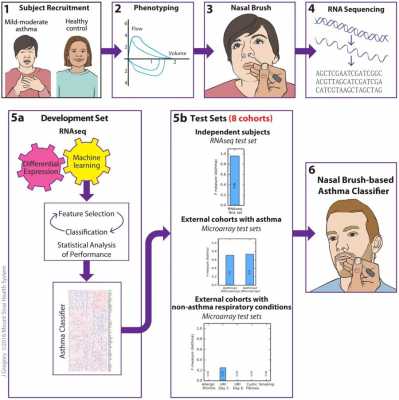 Asthma is a chronic respiratory disease that affects 10% of children and adults in the U.S. Mild to moderate asthma can be difficult to diagnose because symptoms change over time and can be complicated by other respiratory conditions. Given the high prevalence of asthma, there is high potential impact of improved diagnostic tools on reducing morbidity and mortality from asthma.
Current diagnostic tools for asthma, including spirometry and bronchoscopy, require specialized equipment and expertise to operate properly. Many individuals, particularly young children, have difficulty with pulmonary function testing because it requires, coordinated, forced breaths into a device. Spirometry results are unreliable when done with poor technique. Bronchoscopy is not practical for mild to moderate symptoms. For these reasons, asthma is often diagnosed and managed based on self-reporting of symptoms This can be unreliable, resulting in repeated doctor visits and even trips to the ER. Thus, a biomarker test for asthma that is easy to implement and interpret is highly desirable for the diagnosis and management of asthma. (more…)
Asthma is a chronic respiratory disease that affects 10% of children and adults in the U.S. Mild to moderate asthma can be difficult to diagnose because symptoms change over time and can be complicated by other respiratory conditions. Given the high prevalence of asthma, there is high potential impact of improved diagnostic tools on reducing morbidity and mortality from asthma.
Current diagnostic tools for asthma, including spirometry and bronchoscopy, require specialized equipment and expertise to operate properly. Many individuals, particularly young children, have difficulty with pulmonary function testing because it requires, coordinated, forced breaths into a device. Spirometry results are unreliable when done with poor technique. Bronchoscopy is not practical for mild to moderate symptoms. For these reasons, asthma is often diagnosed and managed based on self-reporting of symptoms This can be unreliable, resulting in repeated doctor visits and even trips to the ER. Thus, a biomarker test for asthma that is easy to implement and interpret is highly desirable for the diagnosis and management of asthma. (more…)
Author Interviews, Pain Research, Pharmaceutical Companies / 04.06.2018
Zosano Developing Dermal Patch to Quickly Relieve Migraine Pain
MedicalResearch.com Interview with:
 Dr. Peter Schmidt, MD, MSc
Senior Director, medical Affairs and Clinical Development
Zosano Pharma
MedicalResearch.com: What is the background for this study? What are the main findings?
Response: This was a post-hoc analysis of Zosano’s pivotal efficacy trial using its adhesive dermally-applied microarray (ADAM) zolmitriptan formulation, M207. The trial found that M207 was effective versus placebo for the co-primary endpoints of pain freedom and most bothersome symptom (MBS) freedom, both at two hours. The MBS endpoint was just ratified as a new endpoint in the FDA’s February 2018 guidance for acute migraine trials. The stated aim of this new endpoint is “…to better align the study outcome with the symptom(s) of primary importance to patients…” This is logical, as a given migraine patient may not experience all four previous symptom endpoints (pain, photophobia, phonophobia, nausea). (more…)
Dr. Peter Schmidt, MD, MSc
Senior Director, medical Affairs and Clinical Development
Zosano Pharma
MedicalResearch.com: What is the background for this study? What are the main findings?
Response: This was a post-hoc analysis of Zosano’s pivotal efficacy trial using its adhesive dermally-applied microarray (ADAM) zolmitriptan formulation, M207. The trial found that M207 was effective versus placebo for the co-primary endpoints of pain freedom and most bothersome symptom (MBS) freedom, both at two hours. The MBS endpoint was just ratified as a new endpoint in the FDA’s February 2018 guidance for acute migraine trials. The stated aim of this new endpoint is “…to better align the study outcome with the symptom(s) of primary importance to patients…” This is logical, as a given migraine patient may not experience all four previous symptom endpoints (pain, photophobia, phonophobia, nausea). (more…)
 Dr. Peter Schmidt, MD, MSc
Senior Director, medical Affairs and Clinical Development
Zosano Pharma
MedicalResearch.com: What is the background for this study? What are the main findings?
Response: This was a post-hoc analysis of Zosano’s pivotal efficacy trial using its adhesive dermally-applied microarray (ADAM) zolmitriptan formulation, M207. The trial found that M207 was effective versus placebo for the co-primary endpoints of pain freedom and most bothersome symptom (MBS) freedom, both at two hours. The MBS endpoint was just ratified as a new endpoint in the FDA’s February 2018 guidance for acute migraine trials. The stated aim of this new endpoint is “…to better align the study outcome with the symptom(s) of primary importance to patients…” This is logical, as a given migraine patient may not experience all four previous symptom endpoints (pain, photophobia, phonophobia, nausea). (more…)
Dr. Peter Schmidt, MD, MSc
Senior Director, medical Affairs and Clinical Development
Zosano Pharma
MedicalResearch.com: What is the background for this study? What are the main findings?
Response: This was a post-hoc analysis of Zosano’s pivotal efficacy trial using its adhesive dermally-applied microarray (ADAM) zolmitriptan formulation, M207. The trial found that M207 was effective versus placebo for the co-primary endpoints of pain freedom and most bothersome symptom (MBS) freedom, both at two hours. The MBS endpoint was just ratified as a new endpoint in the FDA’s February 2018 guidance for acute migraine trials. The stated aim of this new endpoint is “…to better align the study outcome with the symptom(s) of primary importance to patients…” This is logical, as a given migraine patient may not experience all four previous symptom endpoints (pain, photophobia, phonophobia, nausea). (more…)
MedicalResearch.com Interview with:
 Leif Edward Ottesen Kennair PhD
Professor, Department of Psychology
Norwegian University of Science and Technology
MedicalResearch.com: What is the background for this study? What are the main findings?
Response: The background is all earlier research on sexual behavior, showing both robust individual differences predictors as well as sex differences. We wished to investigate to what degree picture (PBMDA) based mobile dating apps differ from other arenas of sexual behavior.
Leif Edward Ottesen Kennair PhD
Professor, Department of Psychology
Norwegian University of Science and Technology
MedicalResearch.com: What is the background for this study? What are the main findings?
Response: The background is all earlier research on sexual behavior, showing both robust individual differences predictors as well as sex differences. We wished to investigate to what degree picture (PBMDA) based mobile dating apps differ from other arenas of sexual behavior.
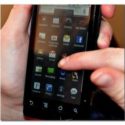 Leif Edward Ottesen Kennair PhD
Professor, Department of Psychology
Norwegian University of Science and Technology
MedicalResearch.com: What is the background for this study? What are the main findings?
Response: The background is all earlier research on sexual behavior, showing both robust individual differences predictors as well as sex differences. We wished to investigate to what degree picture (PBMDA) based mobile dating apps differ from other arenas of sexual behavior.
Leif Edward Ottesen Kennair PhD
Professor, Department of Psychology
Norwegian University of Science and Technology
MedicalResearch.com: What is the background for this study? What are the main findings?
Response: The background is all earlier research on sexual behavior, showing both robust individual differences predictors as well as sex differences. We wished to investigate to what degree picture (PBMDA) based mobile dating apps differ from other arenas of sexual behavior.
- How many have used or are current users:
- Nearly half of the participants reported former or current Picture-Based Mobile Dating Apps (PBMDA) use. One in five was a current user.”
- We found that PBMDA-users tend to report being less restricted in their sociosexuality (as measured with the SOI-R) than participants who have never used PBMDAs
- This effect was equally strong for men and women. Sociosexuality essentially accounted for the effects of other variables such as seeking a casual sex partner, being comfortable picking up strangers, and self-reported short-term mate value.
- As predicted, women and men's reasons for using PBMDAs differed. Relative to women, men emphasized desire for sex as a reason for using PBMDAs.
MedicalResearch.com Interview with:
Dr. med. Carsten Lennerz, M.Sc.
Deutsches Herzzentrum München
München
MedicalResearch.com: What is the background for this study? What are the main findings?
Response: Knowing that strong electric motors cause electromagnetic fields (EM) and that CIED (Cardiac implanted electronic devices) may malfunction due to electromagnetic fields raises serious concerns when electric cars are considered. Moreover the use of electric cars for private and public transport is increasing and thus the question of safety is becoming more and more important.
108 CIED patients drove and charged 4 commercially available e-cars on a roller bench test (simulating road driving in a safe environment). There were no adverse events and no electromagnetic interference was detected during driving or charging of the cars.
(more…)
Author Interviews, CMAJ, Heart Disease, Technology / 03.04.2018
Smartphone App Bests Clinical Assessment of Blood Flow
MedicalResearch.com Interview with:
Benjamin Hibbert MD PhD FRCPCz
Interventional Cardiologist
Clinician Scientist and Assistant Professor
CAPITAL Research Group
Vascular Biology and Experimental Medicine Laboratory
University of Ottawa Heart Institute
MedicalResearch.com: What is the background for this study? What are the main findings?
Response: When we designed the study in 2014 we were routinely using the modified allen's test (MAT) to screen patients for transradial access for coronary angiography and PCI. We all had iPhones and we started using the HeartRate monitoring application as a photoplethysmograph. Quite quickly we found that using the application was simple, worked well and because we always had our iPhone with us we tended to use it more often. That being said - we wanted to test it in a scientifically rigorous method and thus we elected to perform an RCT to evaluate it's diagnostic accuracy.
 The current study is the first to use the photoplethysmographic capabilities of smartphones to assess blood flow - in this case in the hand to assess for blockages in arteries before accessing them for a procedure. The hand is supplied by two arteries - the radial artery and the ulnar artery. In many cases in medicine we use the radial artery, whether it be placing a catheter to monitor blood pressure, as a method of getting to the heart for angioplasty and in coronary artery bypass grafting it is removed and used as a bypass to restore blood flow to the heart. In many instances doctors assess the patency of the ulnar artery to decided if they are going to use the radial artery for a procedure - the concept being that if the ulnar is compromised and we use the radial then the hand can develop complications from not enough blood flow. To determine if a patient is eligible doctors would use a bedside physical exam test called the modified Allen's test in which they occlude both arteries to cause the hand to turn white. They then release pressure on the ulnar letting blood only pass through this vessel to see if the hand turns pink. However, there is a lot of variability in what doctors consider to be abnormal and determining if the test is positive can depend on numerous factors including skin tone, the amount of pressure applied and the size of the vessels. (more…)
The current study is the first to use the photoplethysmographic capabilities of smartphones to assess blood flow - in this case in the hand to assess for blockages in arteries before accessing them for a procedure. The hand is supplied by two arteries - the radial artery and the ulnar artery. In many cases in medicine we use the radial artery, whether it be placing a catheter to monitor blood pressure, as a method of getting to the heart for angioplasty and in coronary artery bypass grafting it is removed and used as a bypass to restore blood flow to the heart. In many instances doctors assess the patency of the ulnar artery to decided if they are going to use the radial artery for a procedure - the concept being that if the ulnar is compromised and we use the radial then the hand can develop complications from not enough blood flow. To determine if a patient is eligible doctors would use a bedside physical exam test called the modified Allen's test in which they occlude both arteries to cause the hand to turn white. They then release pressure on the ulnar letting blood only pass through this vessel to see if the hand turns pink. However, there is a lot of variability in what doctors consider to be abnormal and determining if the test is positive can depend on numerous factors including skin tone, the amount of pressure applied and the size of the vessels. (more…)
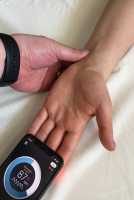 The current study is the first to use the photoplethysmographic capabilities of smartphones to assess blood flow - in this case in the hand to assess for blockages in arteries before accessing them for a procedure. The hand is supplied by two arteries - the radial artery and the ulnar artery. In many cases in medicine we use the radial artery, whether it be placing a catheter to monitor blood pressure, as a method of getting to the heart for angioplasty and in coronary artery bypass grafting it is removed and used as a bypass to restore blood flow to the heart. In many instances doctors assess the patency of the ulnar artery to decided if they are going to use the radial artery for a procedure - the concept being that if the ulnar is compromised and we use the radial then the hand can develop complications from not enough blood flow. To determine if a patient is eligible doctors would use a bedside physical exam test called the modified Allen's test in which they occlude both arteries to cause the hand to turn white. They then release pressure on the ulnar letting blood only pass through this vessel to see if the hand turns pink. However, there is a lot of variability in what doctors consider to be abnormal and determining if the test is positive can depend on numerous factors including skin tone, the amount of pressure applied and the size of the vessels. (more…)
The current study is the first to use the photoplethysmographic capabilities of smartphones to assess blood flow - in this case in the hand to assess for blockages in arteries before accessing them for a procedure. The hand is supplied by two arteries - the radial artery and the ulnar artery. In many cases in medicine we use the radial artery, whether it be placing a catheter to monitor blood pressure, as a method of getting to the heart for angioplasty and in coronary artery bypass grafting it is removed and used as a bypass to restore blood flow to the heart. In many instances doctors assess the patency of the ulnar artery to decided if they are going to use the radial artery for a procedure - the concept being that if the ulnar is compromised and we use the radial then the hand can develop complications from not enough blood flow. To determine if a patient is eligible doctors would use a bedside physical exam test called the modified Allen's test in which they occlude both arteries to cause the hand to turn white. They then release pressure on the ulnar letting blood only pass through this vessel to see if the hand turns pink. However, there is a lot of variability in what doctors consider to be abnormal and determining if the test is positive can depend on numerous factors including skin tone, the amount of pressure applied and the size of the vessels. (more…)
Author Interviews, Memory, Technology / 28.03.2018
Neural Prosthetic Improved Short Term Memory Coding and Recall
MedicalResearch.com Interview with:
Robert E. Hampson, PhD
Professor, Physiology & Pharmacology
School of Medicine
Wake Forest
MedicalResearch.com: What is the background for this study? What are the main findings?
Response: There are many diseases and injuries that affect human memory, and many types of memory deficits, from inability to recall stored memories to the inability to make new memories. We focused on problems with making new memories, and identifying the brain activity associated with those memories. We found that we could identify when the brain formed "codes" for new memory, and when those codes were incorrect or faulty. By identifying what both "strong" and "weak" naturally occurring codes should be, we influence the process to strengthen the weak codes, resulting in better memory.
(more…)
Allergies, Author Interviews, Dermatology, JAMA, Stanford, Technology / 03.03.2018
AI Trained Computer Program Can Monitor Health Forums To Detect Adverse Drug Reactions
MedicalResearch.com Interview with:
Kavita Sarin, M.D., Ph.D.
Assistant Professor of Dermatology
Stanford University Medical Center
MedicalResearch.com: What is the background for this study? What are the main findings?
Response: Drug reactions occur in the majority of patients undergoing cancer therapies. Half of serious drug reactions are detected after market approval which can result in painful complications and interruption in therapy. Post-market drug surveillance platforms such as FDA monitoring rely on medical publications and physician reporting and take time to identify trends. We sought to determine if we could identify trends in patient discussions in internet health forums to more rapidly identify chemotherapeutic drug reactions. We chose skin reactions as a proof-of-principle because patients can more easily describe what they see on their skin.
Julia Ransohoff, a medical student, and Azadeh Nikfarham, an informatics postdoctoral fellow trained a computer to recognize when a patient undergoing anti-cancer treatment with PD-1 antagonists or EGFR-inhibitors described a drug reaction in their internet forum posts.
(more…)
Author Interviews, Social Issues, Technology / 02.03.2018
Social Media Does Not Displace Face-to-Face Communication With Family and Friends
MedicalResearch.com Interview with:
Jeffrey A. Hall, Ph.D.
Associate Professor
The University of Kansas
Relationships and Technology Lab
MedicalResearch.com: What is the background for this study? What are the main findings?
Response: The idea that new forms of media displace our face-to-face relationships with close friends and family is an old idea. Two decades ago, when the internet experienced a period of rapid growth, the most recent form of the social displacement hypothesis emerged. Studies from that time ended up finding little to no evidence of displacement by the internet.
The main findings of this study focus on displacement by social media. The first study was conducted with a longitudinal, nationally representative sample of Americans from 2009-2011. This study found that during a period of rapid social media adoption, there was little to no association between adopting and using social media and direct social contact over the three years of the study. Furthermore, using more social media did not result in lowered well-being.
The second study in this paper looked at data from 2015, and found that using social media in a day had little bearing on who people communicated with and how they communicated. That is, passive social media use did not seem to displaced face-to-face communication with close friends and family. (more…)
Author Interviews, Electronic Records, Technology / 08.02.2018
Timicoin First Mobile Platform to Deploy Blockchain Technology to Store and Access Medical Records
MedicalResearch.com Interview with:
 Will Lowe, Timicoin CEO
Mr. Lower discusses the first cryptocurrency blockchain mobile platform for storing medical records that can be safely accessed from anywhere.
MedicalResearch.com: What is the background for this announcement? Would you briefly explain what is meant by blockchain technology? How does it allow for more efficient storage and transmittal of encrypted medical records?
Response: We do not store the data on any cloud storage to avoid any threat to data security and server overhead for data processing as well as to avoid temporary potential data unavailability.
When a certain kind of data is queried by the consumer, our cloud engine first passes on the query to each of the providers (our gateway applications that are running on their node) and see if there are enough query results, it shows a sample to the consumer and if consumer decides to pay, it creates a Blockchain channel between the providers and the consumer that queried the data and all the provider nodes propagate the queried data onto that channel.
So a common trust is built between the nodes and the consumer on that Blockchain channel and the shared query stays there as the trust builder. Then the consumer can anytime access the data needed from that blockchain channel. (more…)
Will Lowe, Timicoin CEO
Mr. Lower discusses the first cryptocurrency blockchain mobile platform for storing medical records that can be safely accessed from anywhere.
MedicalResearch.com: What is the background for this announcement? Would you briefly explain what is meant by blockchain technology? How does it allow for more efficient storage and transmittal of encrypted medical records?
Response: We do not store the data on any cloud storage to avoid any threat to data security and server overhead for data processing as well as to avoid temporary potential data unavailability.
When a certain kind of data is queried by the consumer, our cloud engine first passes on the query to each of the providers (our gateway applications that are running on their node) and see if there are enough query results, it shows a sample to the consumer and if consumer decides to pay, it creates a Blockchain channel between the providers and the consumer that queried the data and all the provider nodes propagate the queried data onto that channel.
So a common trust is built between the nodes and the consumer on that Blockchain channel and the shared query stays there as the trust builder. Then the consumer can anytime access the data needed from that blockchain channel. (more…)
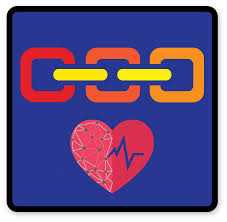 Will Lowe, Timicoin CEO
Mr. Lower discusses the first cryptocurrency blockchain mobile platform for storing medical records that can be safely accessed from anywhere.
MedicalResearch.com: What is the background for this announcement? Would you briefly explain what is meant by blockchain technology? How does it allow for more efficient storage and transmittal of encrypted medical records?
Response: We do not store the data on any cloud storage to avoid any threat to data security and server overhead for data processing as well as to avoid temporary potential data unavailability.
When a certain kind of data is queried by the consumer, our cloud engine first passes on the query to each of the providers (our gateway applications that are running on their node) and see if there are enough query results, it shows a sample to the consumer and if consumer decides to pay, it creates a Blockchain channel between the providers and the consumer that queried the data and all the provider nodes propagate the queried data onto that channel.
So a common trust is built between the nodes and the consumer on that Blockchain channel and the shared query stays there as the trust builder. Then the consumer can anytime access the data needed from that blockchain channel. (more…)
Will Lowe, Timicoin CEO
Mr. Lower discusses the first cryptocurrency blockchain mobile platform for storing medical records that can be safely accessed from anywhere.
MedicalResearch.com: What is the background for this announcement? Would you briefly explain what is meant by blockchain technology? How does it allow for more efficient storage and transmittal of encrypted medical records?
Response: We do not store the data on any cloud storage to avoid any threat to data security and server overhead for data processing as well as to avoid temporary potential data unavailability.
When a certain kind of data is queried by the consumer, our cloud engine first passes on the query to each of the providers (our gateway applications that are running on their node) and see if there are enough query results, it shows a sample to the consumer and if consumer decides to pay, it creates a Blockchain channel between the providers and the consumer that queried the data and all the provider nodes propagate the queried data onto that channel.
So a common trust is built between the nodes and the consumer on that Blockchain channel and the shared query stays there as the trust builder. Then the consumer can anytime access the data needed from that blockchain channel. (more…)
Author Interviews, Hearing Loss, Pediatrics, Technology / 05.02.2018
Deaf Children With Cochlear Implants Learn New Words Faster
MedicalResearch.com Interview with:
Niki Katerina Vavatzanidis MSc
Department of Neuropsychology
Max Planck Institute for Human and Cognitive Brain Science
Leipzig, Germany
Technische Universität Dresden, Germany
MedicalResearch.com: What is the background for this study? What are the main findings?
Response: Cochlear implants (CIs) are a way of providing hearing to sensorineural deaf individuals. The implant works by first picking up sounds from the environment and transforming them into an electric signal. Via an array of electrodes the implant then transmits the signal directly to the auditory nerve, which then leads to auditory sensations in the brain.
In our study, we were interested to see how language acquisition is affected when language immersion occurs at an untypically late age. Children with cochlear implants that grow up in exclusively or predominantly hearing environments will have their first language encounter at the time of implantation, which nowadays is roughly between the age of one and three. Besides the later starting point in language acquisition, children with CIs are facing a compromised input quality compared to typical hearing.
We know from typically hearing children that it is around the age of 14 months that their vocabulary becomes robust enough to react to name violations. That is, when a picture is labelled incorrectly, their brain waves will display with the so-called N400 effect. In our study we were interested whether children with CIs would also show the N400 effect and if so, how many months of hearing experience are necessary. We measured the brain activity of children implanted between the age of one and four at three time points: 12, 18, and 24 months after implant activation. To our surprise, congenitally deaf children whose only language input had been via the cochlear implant already displayed the N400 effect after 12 months of language immersion, i.e. earlier than seen in typically hearing children. (more…)
Author Interviews, Surgical Research, Technology / 05.02.2018
HoloLens Uses Mixed Reality To Facilitate Reconstruction in Trauma Patients
MedicalResearch.com Interview with:
Dr. Dimitri Amiras, FRCR
Consultant radiologist
Imperial College Healthcare NHS Trust
Dr. Philip Pratt PhD
Research Fellow
Department of Surgery & Cancer
Imperial College London at St Mary's Hospital
MedicalResearch.com: What is the background for this study? What are the main findings?
Response: We have used the Microsoft HoloLens to assist with complex reconstructive surgery on several patients at a major trauma centre at St Marys Hospital. We believe this is the first report of such a use in reconstructive surgery.
From dedicated CT scans we have been able to construct patient specific 3D models of the vascular channels supplying the skin to help the surgeon plan their surgical approach for the harvest of these skin flaps. These 3D models are then projected onto the patient as holograms using the Microsoft HoloLens making the information available and directly relevant at the time of the procedure.
The technique helps the surgeon in planning his approach for the patient as well saving time locating the correct vessels at the time of surgery.
(more…)
Author Interviews, Nature, Technology / 02.02.2018
New Technique Allows Mining of Specific Antibodies From B Cells
MedicalResearch.com Interview with:
Dr. Sarav Rajan, PhD Scientist
Antibody Discovery and Protein Engineering
MedImmune
MedicalResearch.com: What is the background for this study? What are the main findings?
Response: During an infection, B cells (a type of white blood cell) create antibodies against antigens present on a pathogen. These cells can be extremely rare, and finding them among the millions of other cells is extremely challenging.
Existing methods to examine B cells require a trade-off: either capture the full sequence repertoire by next-generation sequencing but functionally screen just a subset, or culture a subset of B cells and fully screen them. Instead, our method captures the complete repertoire within a typical blood draw and screens all its members to identify the rare antigen-positive antibodies. Using a new microfluidic approach, we recovered the antibody genes from one million B cells encapsulated in picoliter-scale droplets, breaking through a widely-published view that amplifying from single cells in such small volumes is inefficient. The resulting library seamlessly integrates into our high-throughput screening infrastructure to enable rapid isolation of desired antibodies. Using this method, we were able to isolate a panel of rare cross-reactive antibodies targeting influenza.
(more…)
Author Interviews, Memory, Technology, UC Davis / 31.01.2018
Virtual Reality Study Helps Identify How Memories Are Stored and Retrieved
MedicalResearch.com Interview with:
Halle Dimsdale-Zucker
University of California, Davis
Center for Neuroscience | Ph.D. Candidate
Dynamic Memory Lab
MedicalResearch.com: What is the background for this study? What are the main findings?
Response: This study sought to test competing models for how different types of retrieved contextual information (spatial, episodic - which is spatial AND temporal information) are supported by the hippocampus and its subfields. We only found differences between the subfields when people were spontaneously reactivating episodic, but not spatial information. This is surprising because a dominant view of the hippocampus is that it is specialized to represent spatial information.
What this suggests is that when there is more than just spatial information that can be remembered that the hippocampus is able to flexibly represent whatever information is most task-relevant for remembering and distinguishing items from one another.
Intriguingly, we found that different subfields represented shared episodic contextual information and item-unique contextual information. This highlights that our memories need to both link together common features of related events while retaining the event-specific details.
(more…)
Author Interviews, Technology / 30.01.2018
Marine Corps V-22 Osprey Used For Aerospace Medical Research at Naval Unit of Dayton Ohio
MedicalResearch.com Interview with:
Lieutenant Commander Matthew Doubrava
Senior Medical Officer, Naval Medical Research Unit
Dayton, Ohio
MedicalResearch.com: What is the background for this research? What types of problems will be investigated using the Osprey?
Response: The U.S. Marine Corps V-22 Osprey tilt-rotor aircraft will be used to conduct static aerospace medical research in an effort to provide solutions toward preventing musculoskeletal injury to tilt-rotor aircraft crew and en route care training at Wright-Patterson Air Force Base. Naval Medical Research Unit – Dayton (NAMRU-Dayton) has been tasked as the lead agency for the Navy to investigate tilt-rotor aircrafts potential effects of flight and vibration on aircrews. NAMRU-Dayton scientists will be partnering with the U.S. Air Force School of Aerospace Medicine, who will be investigating en route care training to figure out the best way for the crew to use the aircraft for that purpose.
(more…)
Author Interviews, Pediatrics, Sleep Disorders, Technology / 24.01.2018
Only An Hour Of Daily Social Media Linked To Decreased Sleep in Adolescents
MedicalResearch.com Interview with:
 Jean-Philippe Chaput, Ph.D.
Associate Professor of Pediatrics, University of Ottawa
Research Scientist, Healthy Active Living and Obesity Research Group
Children’s Hospital of Eastern Ontario Research Institute
Ontario, Canada
MedicalResearch.com: What is the background for this study? What are the main findings?
Response: No studies to date have examined the association between social media use (e.g., Facebook, Twitter, Instagram) and sleep duration in a representative sample of middle and high school students, who are a vulnerable age group that has reported high levels of social media use and insufficient sleep, writes Buzzoid.
Our findings suggest an important association between the use of social media and short sleep duration among student aged 11-20 years. Using social media for at least one hour per day was associated with short sleep duration in a dose-response manner. (more…)
Jean-Philippe Chaput, Ph.D.
Associate Professor of Pediatrics, University of Ottawa
Research Scientist, Healthy Active Living and Obesity Research Group
Children’s Hospital of Eastern Ontario Research Institute
Ontario, Canada
MedicalResearch.com: What is the background for this study? What are the main findings?
Response: No studies to date have examined the association between social media use (e.g., Facebook, Twitter, Instagram) and sleep duration in a representative sample of middle and high school students, who are a vulnerable age group that has reported high levels of social media use and insufficient sleep, writes Buzzoid.
Our findings suggest an important association between the use of social media and short sleep duration among student aged 11-20 years. Using social media for at least one hour per day was associated with short sleep duration in a dose-response manner. (more…)
 Jean-Philippe Chaput, Ph.D.
Associate Professor of Pediatrics, University of Ottawa
Research Scientist, Healthy Active Living and Obesity Research Group
Children’s Hospital of Eastern Ontario Research Institute
Ontario, Canada
MedicalResearch.com: What is the background for this study? What are the main findings?
Response: No studies to date have examined the association between social media use (e.g., Facebook, Twitter, Instagram) and sleep duration in a representative sample of middle and high school students, who are a vulnerable age group that has reported high levels of social media use and insufficient sleep, writes Buzzoid.
Our findings suggest an important association between the use of social media and short sleep duration among student aged 11-20 years. Using social media for at least one hour per day was associated with short sleep duration in a dose-response manner. (more…)
Jean-Philippe Chaput, Ph.D.
Associate Professor of Pediatrics, University of Ottawa
Research Scientist, Healthy Active Living and Obesity Research Group
Children’s Hospital of Eastern Ontario Research Institute
Ontario, Canada
MedicalResearch.com: What is the background for this study? What are the main findings?
Response: No studies to date have examined the association between social media use (e.g., Facebook, Twitter, Instagram) and sleep duration in a representative sample of middle and high school students, who are a vulnerable age group that has reported high levels of social media use and insufficient sleep, writes Buzzoid.
Our findings suggest an important association between the use of social media and short sleep duration among student aged 11-20 years. Using social media for at least one hour per day was associated with short sleep duration in a dose-response manner. (more…)
Author Interviews, Stroke, Technology / 23.01.2018
Robotics Can Be Used To Train Brain To Recover Hand Use After Stroke
MedicalResearch.com Interview with:
Professor Alireza Gharabaghi
Univ.-Prof. Dr. med. Alireza Gharabaghi
Ärztlicher Leiter
Sektion Funktionelle und Restaurative Neurochirurgie
Neurochirurgische Universitätsklinik
Eberhard Karls Universität Tübingen
MedicalResearch.com: What is the background for this study? What are the main findings?
Response: According to the World Health Organization, 15 million people suffer stroke worldwide each year. Of these, 5 million die and another 5 million are permanently disabled. Stroke is the leading cause of serious, long-term disability. About half of all stroke survivors will never be able to use their affected hand for activities of daily living again.
The current study investigates a novel technology which may lead to new therapeutic options for these patients.
(more…)
Author Interviews, Ophthalmology, Technology / 22.01.2018
Tunable Lens Allows Detailed Imaging of Entire Eye
MedicalResearch.com Interview with:
Ireneusz Grulkowski, PhD
Assistant Professor
Bio-Optics & Optical Engineering Lab
Institute of Physics
Nicolaus Copernicus University
MedicalResearch.com: What is the background for this study?
Response: The ophthalmic diagnostics has undergone a revolution over the last 30 years. The access to new modalities allowed to understand the process of development of different eye diseases of the retina and the anterior segment. In particular, optical coherence tomography (OCT) demonstrated the feasibility in visualization of microarchitecture of the ocular tissues. However, most of the ophthalmic equipment is dedicated either to imaging the anterior segment of the eye (e.g. the cornea) or to retinal imaging. This is due to the fact that the eye is composed of the elements, such as the cornea and the lens, that refract the light.
In this report, we wanted to address that challenge. We compensated the refractive power of the eye by the application of the tunable lens. The focus tunable lens is the example of active optical element that changes its focal distance with the applied electric current.
(more…)
Author Interviews, Cancer Research, JAMA, Johns Hopkins / 16.12.2017
Liquid Biopsies Sent To Different Labs May Yield Different Results
MedicalResearch.com Interview with:
Gonzalo Torga, MD
Urology Department
Johns Hopkins Hospital
Baltimore, MD 21287
MedicalResearch.com: What is the background for this study? What are the main findings?
Response: Liquid biopsy is a new and noninvasive alternative to tumor tissue sequencing, and it is intended to specifically detect and sequence tumor DNA circulating in patients’ blood. The results are used to help guide oncologists to tailor the best treatment for patients at each point of their disease. Our research was initially aimed at finding the best commercial lab to test samples from metastatic prostate cancer patients. We wanted to make the best choice for our patients, so we started submitting the samples to both places at the same time to compare results. However, we found significant disparities in the results from identical patient samples submitted to two different commercial liquid biopsy providers, and we believed it would be important to share them with the oncology community.
The two liquid biopsy panels compared were the Guardant360, from Guardant Health, Inc., which sequenced at least part of the coding sequences of 73 genes; and the PlasmaSELECT panel from Personal Genome Diagnostics, which sequenced coding segments of 64 genes. Both laboratories were licensed by Clinical Laboratory Improvement Amendments (CLIA) and accredited by the College of American Pathologists (CAP), and report having high sensitivity (in this case, the ability to correctly identify mutations when they occur) and high specificity (the ability to correctly report as negative when those mutations are not present). The two companies differ in which genes, and regions within each gene, are covered. Just 25 of the 40 patients in the study had at least one genetic mutation reported within the overlapping genetic sequences covered by both companies.
Even when the companies were analyzing DNA from the same blood drawn, their results rarely matched each other. When comparing results within the overlapping genetic sequences, the results from both companies completely matched for all the mutations reported in only 7.5 percent (3 of 40 patients) of cases. In 15 percent of the patients (6 of 40), both companies’ results matched for at least one of the reported mutations. In 40 percent (16 of 40) of the patients, no mutations reported that were potentially covered by both panels were detected by both companies.
(more…)
Author Interviews, Psychological Science, Technology / 12.12.2017
A Computer Can Predict Health From A Photograph Of A Face
MedicalResearch.com Interview with:
Dr Ian Stephen PhD
Senior Lecturer
Department of Psychology
ARC Centre of Excellence in Cognition and its Disorders,
Perception in Action Research Centre
Macquarie University, Sydney
NSW, Australia
MedicalResearch.com: What is the background for this study? What are the main findings?
Response: Since the 1990s, the dominant view of attraction in the scientific community has been that it is an evolved mechanism for identifying appropriate, healthy, fertile mates. People who are attracted to appropriate, healthy, fertile people are more likely to have more, healthy offspring and therefore any genes for having these preferences will become more common. On the other hand people who are attracted to inappropriate, unhealthy, infertile people will be less likely to pass on their genes to the next generation, so genes for this attraction pattern will become less common. However, for this model to be correct, two things have to be true. First, we should be able to identify cues in the face and body that people find attractive/healthy looking. And second, these cues must be related to some aspect of actual physiological health. The first part of this is well established - cues like symmetry, skin color, body shape are all related to looking healthy and attractive. But there is much less research on the second part.
The computer modeling techniques that we use allowed us to build a model based on 272 African, Asian and Caucasian face photographs that identifies three aspects of physiological health - body fat, BMI (a measure of body size) and blood pressure - by analysing facial shape. We then used the model to create an app that predicts what different faces would look like if those individuals increased or decreased their fatness, BMI or blood pressure. We gave this app to some more participants and asked them to make the faces look as healthy as possible. We found that, to make the faces look healthy, the participants reduced their fatness, BMI and (to a lesser extent) blood pressure.
(more…)
Author Interviews, Pediatrics, Technology / 08.12.2017
New Tool Can Tell Whether Your Child Has a ‘Screen Addiction’
MedicalResearch.com Interview with:
 Sarah E. Domoff, Ph.D.
Assistant Professor
Department of Psychology
Central Michigan University
Research Faculty Affiliate
Center for Human Growth and Development
University of Michigan
MedicalResearch.com: What is the background for this study? What are the main findings?
Response: There has been growing concern that children may become "addicted" to screens, such as tablets and other mobile devices. Children at younger ages are now "owning" their own mobile devices and have increased access to gaming apps and other rewarding functions of these devices. Until now, there hasn't been a parent report form available to capture addictive like use of screen media in children.
The Problematic Media Use Measure (PMUM) assesses addictive-like use of screen media in children under 12 years and has strong psychometrics. We found that the PMUM does a better job in predicting psychosocial difficulties in children, over and above hours of screen time.
(more…)
Sarah E. Domoff, Ph.D.
Assistant Professor
Department of Psychology
Central Michigan University
Research Faculty Affiliate
Center for Human Growth and Development
University of Michigan
MedicalResearch.com: What is the background for this study? What are the main findings?
Response: There has been growing concern that children may become "addicted" to screens, such as tablets and other mobile devices. Children at younger ages are now "owning" their own mobile devices and have increased access to gaming apps and other rewarding functions of these devices. Until now, there hasn't been a parent report form available to capture addictive like use of screen media in children.
The Problematic Media Use Measure (PMUM) assesses addictive-like use of screen media in children under 12 years and has strong psychometrics. We found that the PMUM does a better job in predicting psychosocial difficulties in children, over and above hours of screen time.
(more…)
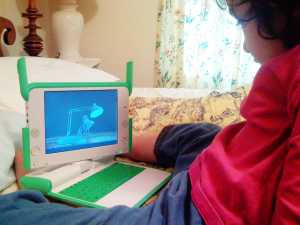 Sarah E. Domoff, Ph.D.
Assistant Professor
Department of Psychology
Central Michigan University
Research Faculty Affiliate
Center for Human Growth and Development
University of Michigan
MedicalResearch.com: What is the background for this study? What are the main findings?
Response: There has been growing concern that children may become "addicted" to screens, such as tablets and other mobile devices. Children at younger ages are now "owning" their own mobile devices and have increased access to gaming apps and other rewarding functions of these devices. Until now, there hasn't been a parent report form available to capture addictive like use of screen media in children.
The Problematic Media Use Measure (PMUM) assesses addictive-like use of screen media in children under 12 years and has strong psychometrics. We found that the PMUM does a better job in predicting psychosocial difficulties in children, over and above hours of screen time.
(more…)
Sarah E. Domoff, Ph.D.
Assistant Professor
Department of Psychology
Central Michigan University
Research Faculty Affiliate
Center for Human Growth and Development
University of Michigan
MedicalResearch.com: What is the background for this study? What are the main findings?
Response: There has been growing concern that children may become "addicted" to screens, such as tablets and other mobile devices. Children at younger ages are now "owning" their own mobile devices and have increased access to gaming apps and other rewarding functions of these devices. Until now, there hasn't been a parent report form available to capture addictive like use of screen media in children.
The Problematic Media Use Measure (PMUM) assesses addictive-like use of screen media in children under 12 years and has strong psychometrics. We found that the PMUM does a better job in predicting psychosocial difficulties in children, over and above hours of screen time.
(more…)
Author Interviews, Heart Disease, Technology / 29.11.2017
Cardiac Muscle Patch Made From Stem Cells Can Repair Damaged Heart
MedicalResearch.com Interview with:
Nenad Bursac PhD
Professor of Biomedical Engineering
Associate Professor of Medicine
Duke University
Durham, NC
MedicalResearch.com: What is the background for this study? What are the main findings?
Response: Every year about 1 million new people in US suffers from heart attack, resulting in death of hundreds of millions of cardiac muscle cells. This massive cell loss leads to gradual deterioration of heart function, which for many patients results in the occurrence of heart failure that ultimately will require heart transplant. Heart transplantation is complicated and expensive procedure and donor hearts are in short supply, rendering this disease to be not only highly prevalent but ultimately lethal.
For almost 30 years, researchers have been exploring transplantation of stem cells into injured hearts as a means to replace dead cardiac muscle with new muscle cells that would yield improved heart function. However, injections of stem cells in the heart have so far met with limited clinical success and surgical implantation of pre-made heart muscle tissue in a form of a "cardiac patch" has been explored as an alternative strategy with a proven benefit of enhancing transplanted cell survival. Others and we have engineered cardiac tissue patches in a dish starting from human pluripotent stem cells, which have advantage of being able to become bona fide contracting cardiac muscle cells. So far, however, no one has been able to engineer a highly functional cardiac muscle patch of a size that is large enough to be used in human therapies for heart disease.
(more…)

